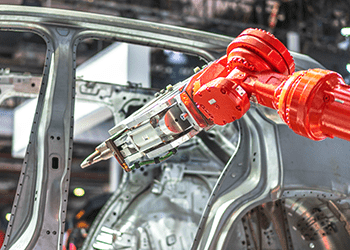
The stability of the power system depends on how quickly the protection equipment detects faults and isolates the healthy system from unsafe overvoltage (OV) and overcurrent (OC). A few seconds’ delay can damage the power system and set the switchgear on fire. Furthermore, switching transistors, such as IGBTs, can overheat and become damaged in less than 10µs. In this regard, the role of a reliable protection system is highly imperative.
Advanced digital protection systems heavily rely on relays that can sense the faults and instruct the microprocessor to lift the switch before it gets critical. However, it is imperative to go for options with ultra-fast reaction time during a failure event. Out of all the options available, isolator comparators, such as AMC23C12 and AMC22C12, tick all the boxes.
Detecting Faults in High Power Systems
Either shunt or hall-based solutions can be used to detect overcurrent. Shunt-based solutions offer high measurement accuracy for high-temperature applications such as motor drives and solar inverters.
Nowadays, newly improved shunt-based solutions are in demand that offer comparatively more minor resistance to minimize heat dissipation than hall-based solutions. There are different types of shunt-based solutions available to address the growing need for fault detection in high-power systems.
Modern shunt-based solutions can be designed using any of the following elements:
- Isolated amplifiers
- Isolated modulators
- Standard comparators and digital isolators
- Isolated comparators
Out of these all, isolated comparators, like the AMC23C12 and AMC22C12, have very low latency (about 400 ns) to offer ultra-fast protection against overvoltage and overcurrent situations, among all alternatives. Moreover, they come in small packages and eliminate the need for passive components.
A word about AMC23C12 and AMC22C12 comparators
Isolated window comparators, AMC23C12 and AMC22C12, offer low response time and reliable overcurrent and overvoltage detection for high voltage applications, especially around Electric Vehicles (EV) and High Electric Vehicles (HEV).
Let’s take a look at some of the unique features of the AMC22C12 and AMC23C12 families. Both comparators share all the same features, except for their package design. So, we will be discussing most of the features from the AMC23C12 perspective.
Compact footprint
The AMC22C12 comparator comes as a basic isolated small 8-pin SOIC package. If you need a reinforced isolated package, the AMC23C12 would be your ideal bet. They take up to 50% less space as compared to protection systems utilizing standard comparators and digital isolators. It gives you a tremendous advantage in terms of reduced board space, decreased board weight, and ease of routing.
Excellent accuracy and Adjustable Threshold
These comparators have an excellent trip threshold error of ±1% (max) at 250 mV. The trip threshold is adjustable from ±20 mV to ±300 mV in Window-comparator mode and from 600 mV to 2.7 V in Positive-comparator mode through a single external resistor. Thus, they can be extensively used to monitor voltage supplies.
Low propagation delay
The AMC23C12 comparator has a typical propagation delay of 290 ns. As a result, it provides fast detection of faults. The following table shows the average propagation delay of four major types of shunt-based modulators, including isolator comparators.
| Type of Shunt Comparators | Propagation Delay |
| Isolated amplifiers | 2 to 3 µs |
| Isolated modulators | 1 µs |
| Standard comparators and digital isolators | <1 µs |
| Isolated comparators | <0.5 µs |
As you can see, isolated comparators are the fastest to react in the event of any fault. Thus, they are highly reliable.
High Common-mode Transient Immunity (CMTI)
CMTI of a comparator represents the gate-driver robustness during switching transients, mentioned in kV/µs or V/ns. The value represents the robust operation of the comparator in a noisy switching environment. The AMC23C12 has a high CMTI of 55 kV/μs across –40°C to 125°C. However, it is still less than NVE IL710 and IL711 series isolators, typically offering a minimum transient immunity of 100 kV/µs.
Reinforced Isolation Barrier
As digital isolators work close to magnetic-field-generating elements, there is a high probability of data error due to field interference. Texas Instrument (TI) utilizes a novel capacitive-coupled isolation barrier to overcome this. In addition, the AMC23C12 also features a reinforced galvanic isolation barrier to offer high magnetic immunity during data transmission.
Building a protection system using isolator comparators like AMC23C12 or AMC22C12 requires a thorough understanding of the datasheet, footprint, and sourcing data of the components. Using the parts search feature of Ultra Librarian, you can get quick access to all those valuable information within a few seconds. All ECAD data available are verified by component manufacturers.
Working with Ultra Librarian sets up your team for success to ensure streamlined and error-free design, production, and sourcing. Register today for free.